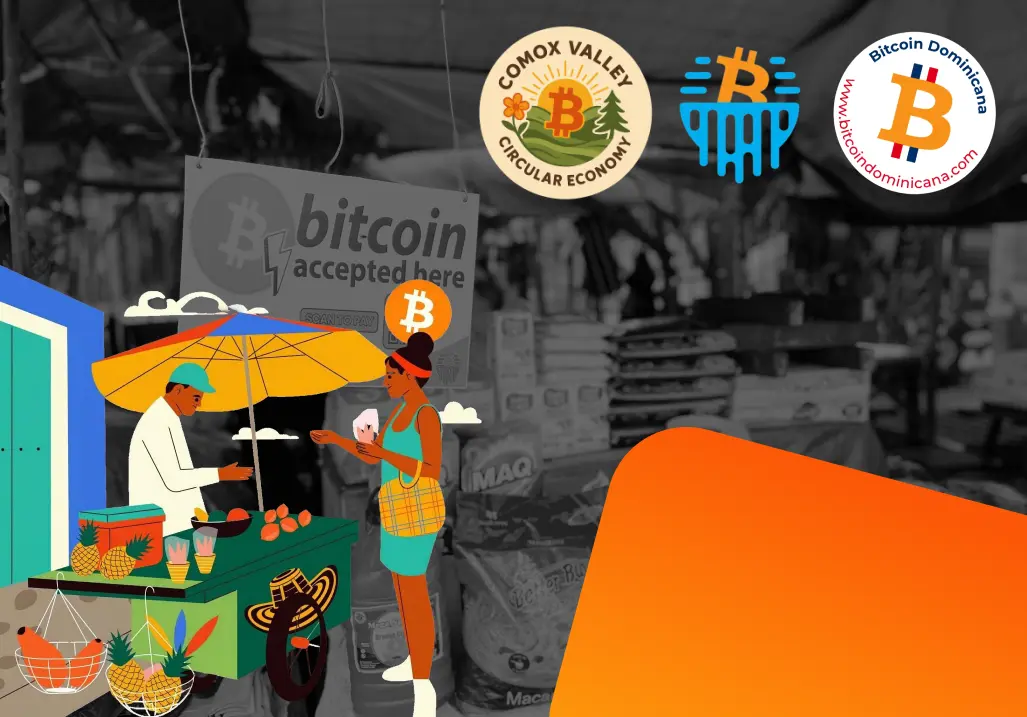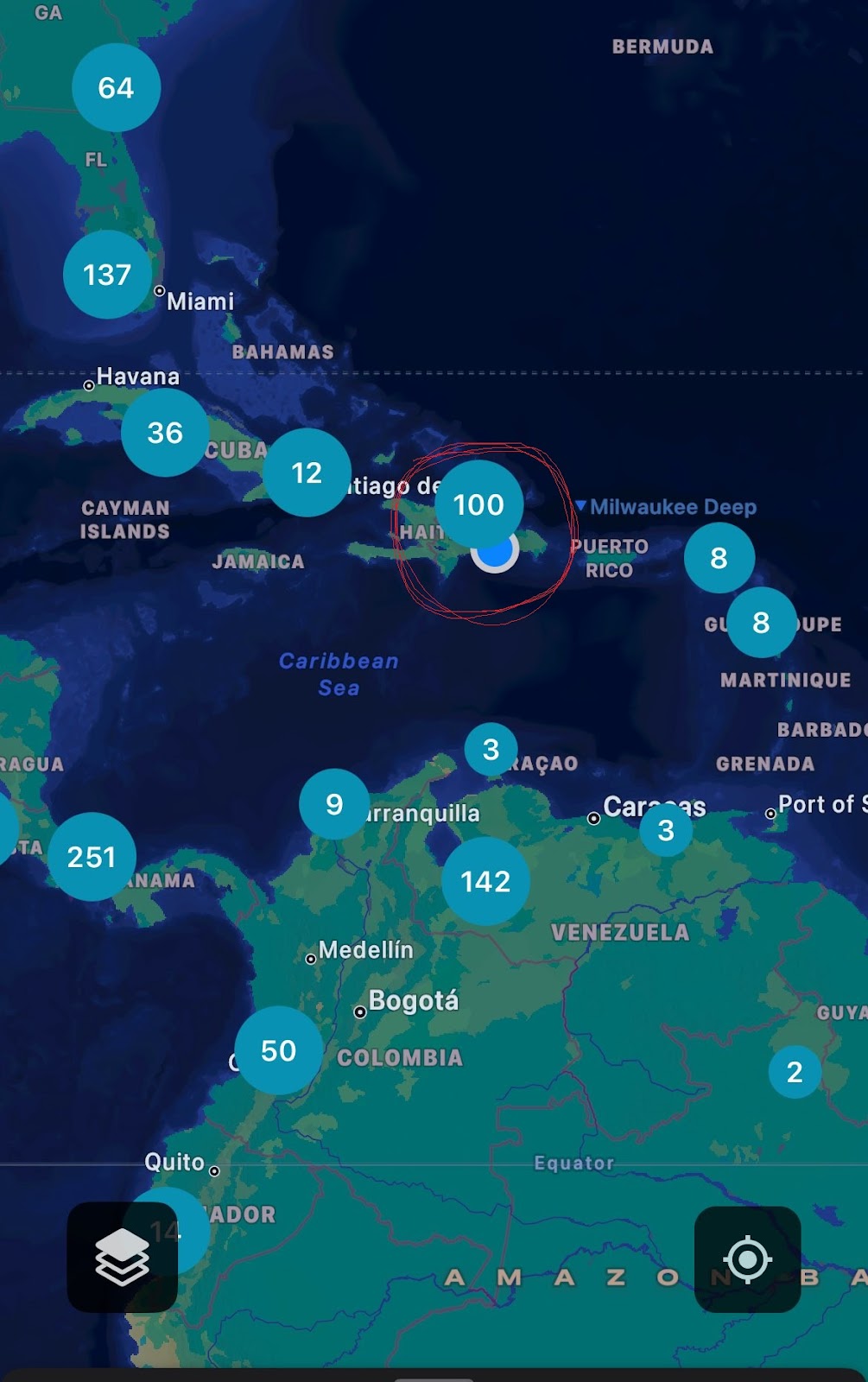
BLOG -
Adoption stories
Bitcoin Adoption Stories: Bitcoin Victoria Falls, Bitcoin Dominicana & Bitcoin Valley
For the untrained eye, it may be hard to notice, but Bitcoin adoption is speeding up. Join us as we explore successful stories.

BLOG -
Adoption stories
For the untrained eye, it may be hard to notice, but Bitcoin adoption is speeding up. Join us as we explore successful stories.

For the untrained eye, it may be hard to notice, but Bitcoin adoption is speeding up. Join us as we explore successful stories.
Bitcoin circular economies are popping up all over the world. These grassroots movements can’t be faked and send a clear signal: at its own pace, the world is connecting to the Bitcoin network. The price generates headlines, but this cycle, Bitcoin adoption is the real story.
And when we say Bitcoin adoption, we’re referring to BTC as a medium of exchange. As a store of value, Bitcoin is battle-tested; it has outperformed every asset out there for more than a decade. It’s time to evolve, and that’s just what Bitcoin monetary adoption signals.
In today’s article, we’ll travel all over the world: Zambia, the Dominican Republic, and Canada. Three very different places connected by a common thread: the hardest money ever created. Let’s explore their stories.
Located in Livingstone, Zambia, Bitcoin Victoria Falls is a circular economy in the making. Bitcoin adoption is growing in the area, and their social media clearly highlights it with constant updates showing the project’s progress and new merchants onboarded to the hardest money ever created. Blink asked them about the size of those merchants’ Bitcoin business, and this was Bitcoin Victoria Falls’ answer:
“Merchants are definitely attracting a new type of customer. The volumes are still low, but we are seeing steady progress as we continue with our monthly My First Bitcoin cohorts. The number of people who understand Bitcoin is increasing. The volume of transactions today is higher than it was three or four months ago. This shows slow but consistent improvement.”
Once people get their first taste of Bitcoin, it’s hard to convince them to spend and replace it. “We now have a growing community of about 300 people in Livingstone who understand Bitcoin. However, when it comes to actively using it, I’d estimate around 20 people.” It’s a hard-to-swallow fact, but to get a circular economy in motion, the sats have to flow. And, step by step, they will.
Besides Bitcoin adoption, education is Bitcoin Victoria Falls’ other major axis. Their project’s main ingredients are constant My First Bitcoin workshops, and about that, they told Blink:
“Choosing the My First Bitcoin curriculum was one of the best decisions we made for education. The curriculum has been eye-opening for both our students and volunteers. So far, 117 students have graduated from the program, with the most recent cohort having 11 students.”
With a program that consistent, there had to be interesting stories to share with our audience. Bitcoin Victoria Falls didn’t dissapoint: “Some students joined just to confirm whether the whole thing was a scam, but by the end, many had completely changed their perspective on money and even on life.” How many bitcoiners started just like that? Too many to count.
This is also a familiar origin story for bitcoiners around the world. “For some students, it was the experience of selling their satoshis. We award graduates with a small amount of Bitcoin, and some sold theirs only to find nine months later that if they had held on, the value would have doubled.”
The organization’s origin story is also a common one among similar projects worldwide: “Bitcoin Victoria Falls was born out of the inspiration of Bitcoin Beach in El Salvador and other similar Bitcoin circular economies.” Of course. To close this off, the organization summarizes its activities in a succinct paragraph:
“With each passing week, Bitcoin Victoria Falls continues to expand. Funding supports teacher payments, Bitcoin workbooks, graduation ceremonies, and activities like helping students set up Lightning wallets. What started as an idea inspired by El Zonte has now grown into a real movement, bringing Bitcoin adoption to Livingstone, Zambia.”
To learn more about their story and the people behind it, go to Bitcoin Victoria Falls’ Geyser Fund. And please, consider contributing to the project.
Bitcoin adoption in Latin America comes in different flavors. On the one hand, there are small, community-driven projects like the almighty Bitcoin Beach in El Salvador or the ever-growing Bitcoin Jungle in Costa Rica. On the other, there are country-wide, ambitious initiatives like Bitcoin Paraguay and Bitcoin Dominicana. Blink spoke to Dominican leader and educator Pedro Vital, who informed us:
“Bitcoin adoption in the Dominican Republic doesn’t need decades to become mainstream. Dominicans are naturally decentralized and increasingly fed up with the traditional banking system. We receive a large volume of remittances, and with a median age of just 28, the population is young and full of potential.”
A situation similar to El Salvador, with the caveat that the Dominican Republic does issue its own currency: the Dominican Peso. This means that the government has no direct incentive to adopt Bitcoin, it’s all in the hands of grassroots organizations like Bitcoin Dominicana. In any case, in the organization’s origin story, we find a direct connection to Bitcoin Beach:
“Bitcoin Dominicana was born a few years ago after my first trip to El Salvador and a disappointing experience working with a crypto project in my advertising company. That moment opened my eyes—I realized there was something bigger out there. I became convinced the Bitcoin industry was where I belonged, alongside like-minded individuals. My biggest motivation has always been to help my country, and that’s exactly what I’ve been working on: laying the groundwork for Bitcoin to take root here.”
About Bitcoin adoption as a medium of exchange in their location, Bitcoin Dominicana’s Pedro Vital told us:
“Bitcoin Adoption is still low, but we’ve been surprised to see people sporadically show up and acquire products or devices using Bitcoin—most often through exchanges. We’re slowly gathering valuable data.”
The organization is gaining ground; according to BTCmap, over 100 merchants accept Bitcoin at the moment. Also, they host regular meetups that include activities like dominoes, as you can see in the video above. About Bitcoin Dominicana’s objectives, Pedro Vital told Blink:
“In the short term, our goal is to empower merchants—so they know how to use wallets when Bitcoin users come to shop. We’re also opening doors for Bitcoin tourism to bring in new cash flow and attract a growing niche.”
As Bitcoin adoption grows, the organization is evolving into a formal entity. “This week, I began the process of officially creating the Bitcoin Association of the Dominican Republic with my lawyer. This new tool will help turn the vision into a reality,” Pedro Vital told us to close the interview.
Please consider contributing to Bitcoin Dominicana’s Geyser Fund project.

In the Comox Valley, Vancouver Island, a Bitcoin circular economy is brewing. Bitcoin Valley was “built on the belief that Bitcoin can be simple, practical, and deeply empowering — for individuals and for the entire local economy.” At the helm is “local educator Joyce Dawn;” Blink asked her about the current state of the project and Bitcoin usage in her location:
“Bitcoin is still in the early stages as a medium of exchange here in the Comox Valley. I’d estimate around 3–5% of people are using it in real-world transactions, but interest is growing fast. People are eager to learn, and we’re seeing a clear shift in mindset throughout the community.
As for merchants, the ones who’ve adopted Bitcoin tell me they’re seeing a real impact, not just financially, but culturally. Bitcoiners are loyal, intentional customers. They go out of their way to support businesses that align with their values.”
Customer retention and loyalty are underrated aspects of Bitcoin adoption. The percentage of the population using BTC might seem low, but network effects are real, and pretty soon, the situation might change. “I honestly feel we’re right on the edge, at least here in the Comox Valley. It’s like a pressure cooker with the lid about to blow,” Joyce told us, before expanding on the idea:
“I’ve been encouraging Bitcoin adoption locally for over seven years. There have been waves, moments of momentum, followed by quiet. But the overall trend has always pointed upward, especially in the quality and sincerity of the people getting involved! This summer, it’s felt like something has clicked. Bitcoin isn’t just seen as an investment or a gamble anymore, it’s being recognized as trustworthy money.”
The tendency is clear as day; while a big portion of the population doomscrolls and chases fiat gains, Bitcoin circular economies change lives.
Bitcoiners everywhere agree, Bitcoin adoption will happen “Gradually, then suddenly.” The Bitcoin Valley team is here for the long haul, “this work is deeply rewarding but also highly personal,” Joyce told Blink. Their dream scenario would be to “finally open the Bitcoin Valley Embassy.” A hub to coordinate it all.
“A physical space where the entire circular economy comes to life, a home base for Bitcoiners, developers, podcasters, and community members from around the world to visit, work, or gather. It would be designed to be self-sustaining, with memberships, sats-based services, and aligned offerings, a real, working model of what a Bitcoin-powered local economy can look like.”
A beautiful idea, sure, but why is it necessary?
“Real-world bitcoin adoption doesn’t happen online; it happens over coffee, during workshops, and through local relationships. That’s why having a physical space would be such a game-changer. Every individual and business requires hands-on support and tailored education.”
This is where funding comes in, the biggest hurdle for all Bitcoin circular economies-and for every project there is, really. “Thanks to my supportive husband, I’ve been able to dedicate myself full-time to this mission, building out the circular economy here in the Comox Valley,” Joyce told us. That’s a phenomenal head start, but the Bitcoin Valley project still needs money to materialize all its plans.
“This year, we launched a Geyser Fund, and the response has been incredible. Even small donations have had a big impact - funding stickers, flyers, educational materials, a free Bitcoin 101 course, and our first Bitcoin for Businesses workshop. When people understand what we’re building and why, they want to be part of it. And when merchants see how much simpler Bitcoin is than traditional payment processors, it really clicks.”
The truth is, all projects need money, but a Bitcoin circular economy can flourish with little. “We don’t need massive funding to grow,” Joyce told Blink to close it. “This vision has been in motion for years. And this year, it finally feels within reach.”
Please consider contributing to Bitcoin Valley’s Geyser Fund project.
Start receiving and sending bitcoin now